View basket (0 items $0.00)
Error message
- Notice: unserialize(): Error at offset 5 of 154 bytes in variable_initialize() (line 1202 of /home/dh_6hcdc2/yogau.online/docroot/includes/bootstrap.inc).
- The file could not be created.
- The file could not be created.
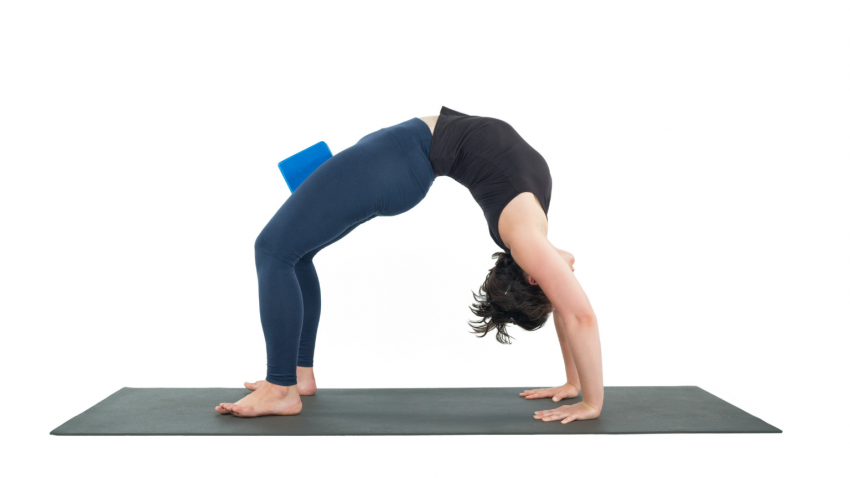
Yoga Pose Primer: Urdhva Dhanurasana (Upward Bow Pose)
Backbends are one of yoga practice’s great gifts. Because our daily lives don’t require a lot of backbending, doing some sort of backbend every day is a way to balance our forward-folded lives. Plus they’re energizing and just plain fun.
Backbends take many forms, from smaller backbends such as Bhujangasana (Cobra Pose) to full-body backbends such as Urdhva Dhanurasana (Upward Bow), the subject of this post. All of them can be beneficial to our bodies. They mobilize our spines, lengthen our front bodies, and strengthen our back bodies.
In Yoga International, teacher Rod Stryker writes: 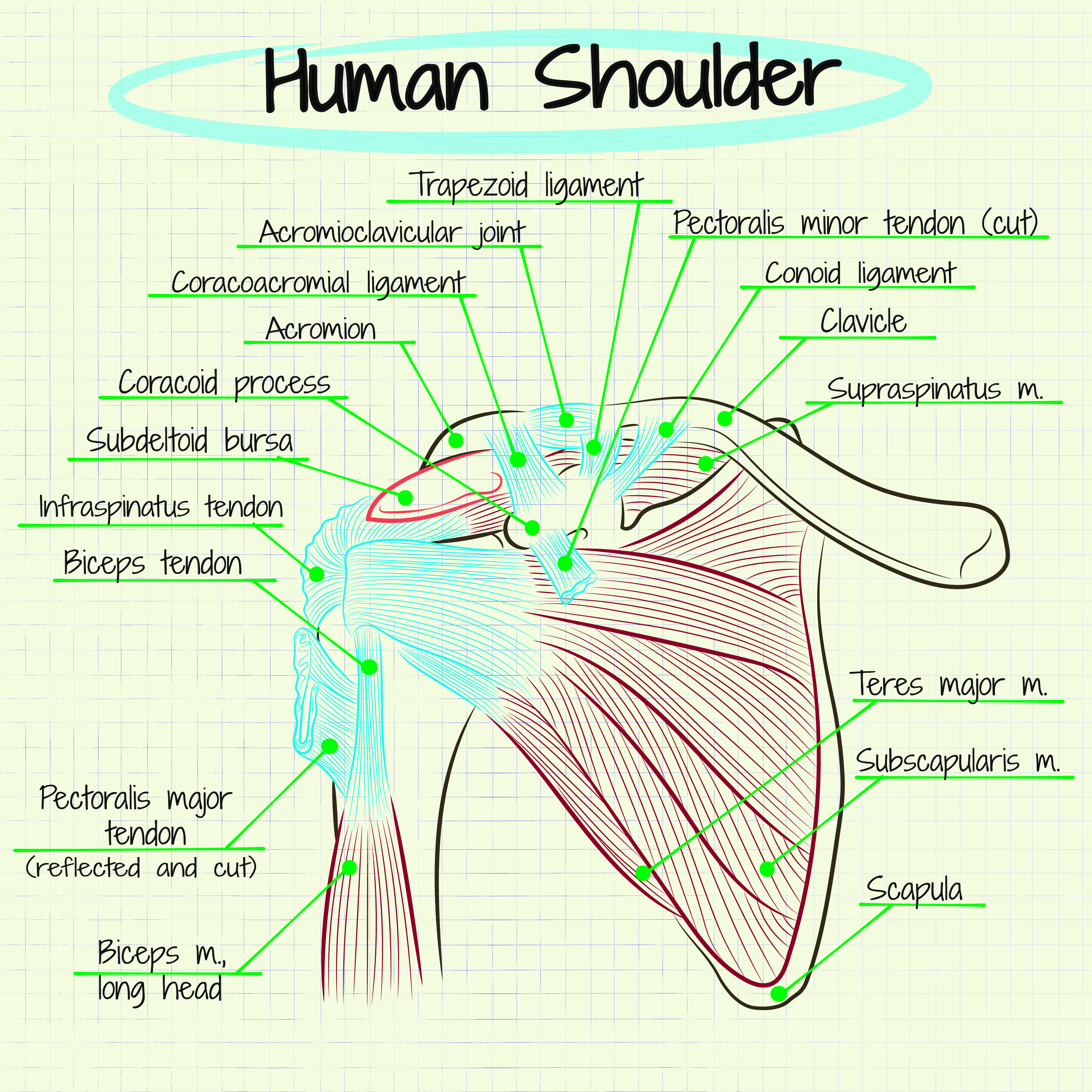
“Urdhva Dhanurasana increases the vital force around the heart (pran), as well as the distributive force (vyana) throughout the body, thus increasing the breadth of courage and awareness. The pose stimulates both mind and body—the net result is exultation, awakening radiance, delight, and compassion.”
Urdhva Dhanurasana is not accessible to everyone, at least not in the form pictured above. As Paul Grilley says, “Yoga is in the bones.” This means that our bony structure, rather than our soft tissue flexibility, dictate our body’s ability to form many of the yoga asanas.
Often when we think we’re “not flexible enough” to practice a particular pose, it often has nothing to do with flexibility. Instead, it’s simply how our joints are formed. When bone contacts bone at a joint site, you will move no further.
Our shoulder joints are all formed differently. The bony structure of the shoulder joint includes the clavicle, scapula, and humerus bones. The relationships between these bones can influence the range of flexion in the shoulders.
For some people, the shape and orientation of the humerus and scapula, in particular, prevent the arm from flexing all the way to vertical. For these people, the arms will never be straight in Urdhva Dhanurasana, not because of a lack of flexibility, but because the humerus bone will come into contact with the acromion process of the scapula before the arm reaches vertical.
This is why I’ve never subscribed to the class-level restrictions that would prohibit someone from attending an “intermediate” or “advanced” class because they can’t perform Upward Bow with straight arms. This rule can eliminate people with deep, longstanding practices from classes and render them “beginners” for their entire lives. For me, this completely misses the point of practice. Now, off the soapbox and back to the post.
Even if you can’t straighten your arms in Upward Bow, you can still practice it. Even if your arms never straighten, you can enjoy the pose.
Preparing for Urdhva Dhanurasana 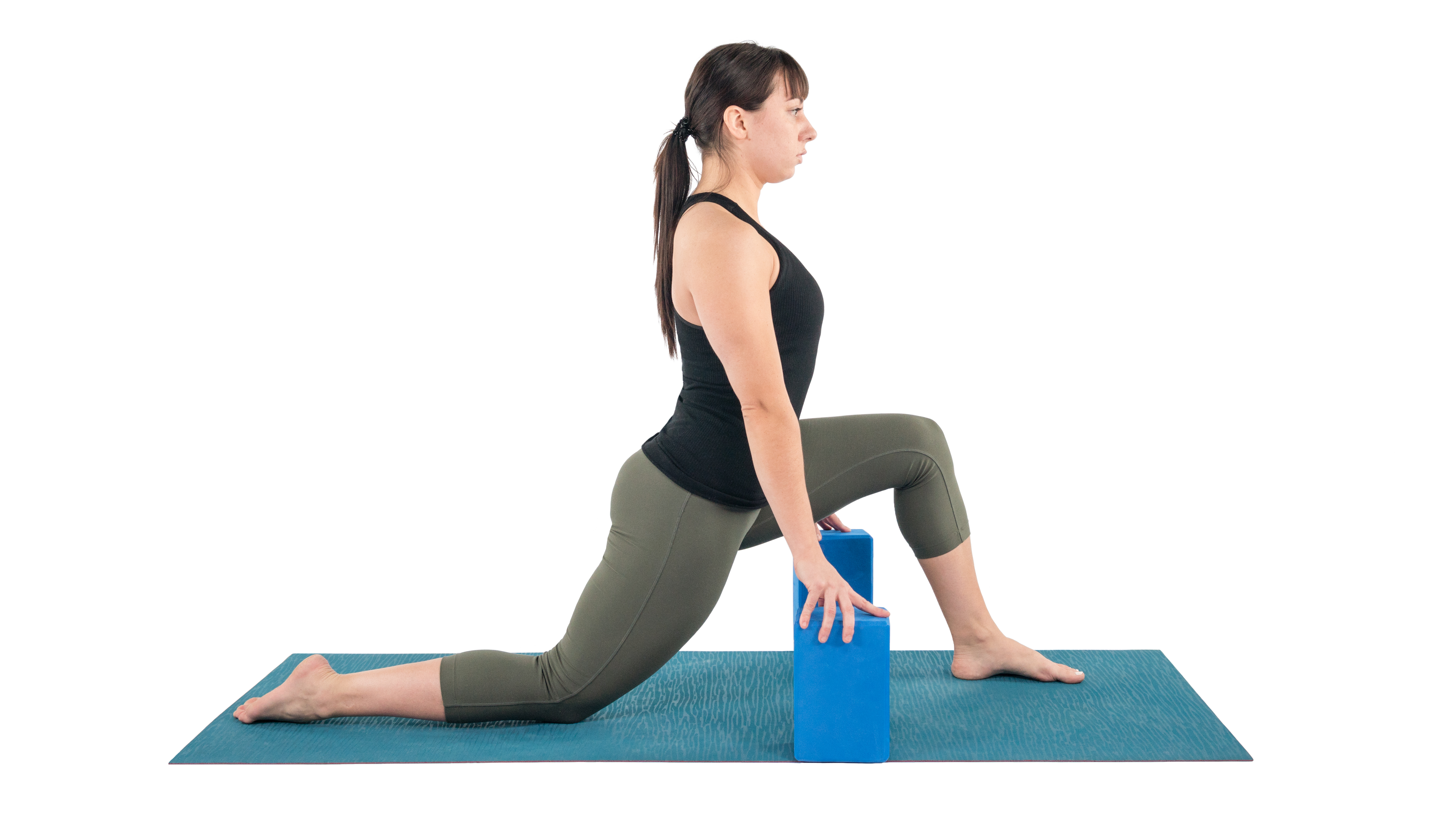
Because Urdhva Dhanurasana requires flexibility throughout the entire front body, it’s important to prepare for it by practicing a few preparatory poses. Here’s a sequence that can be useful:
-
Talasana (Palm Tree Pose, for stretching the side body and shoulders)
-
Anjaneyasana (Lunge Pose, for stretching the quadriceps) (shown right with blocks)
-
Ardha Virasana (Half Hero’s Pose, for a deeper quadriceps stretch)
-
Bhujangasana (Cobra Pose, a preparatory backbend)
-
Setu Bandha Sarvangasana (Bridge Pose, a preparatory backbend)
How to Practice Urdhva Dhanurasana 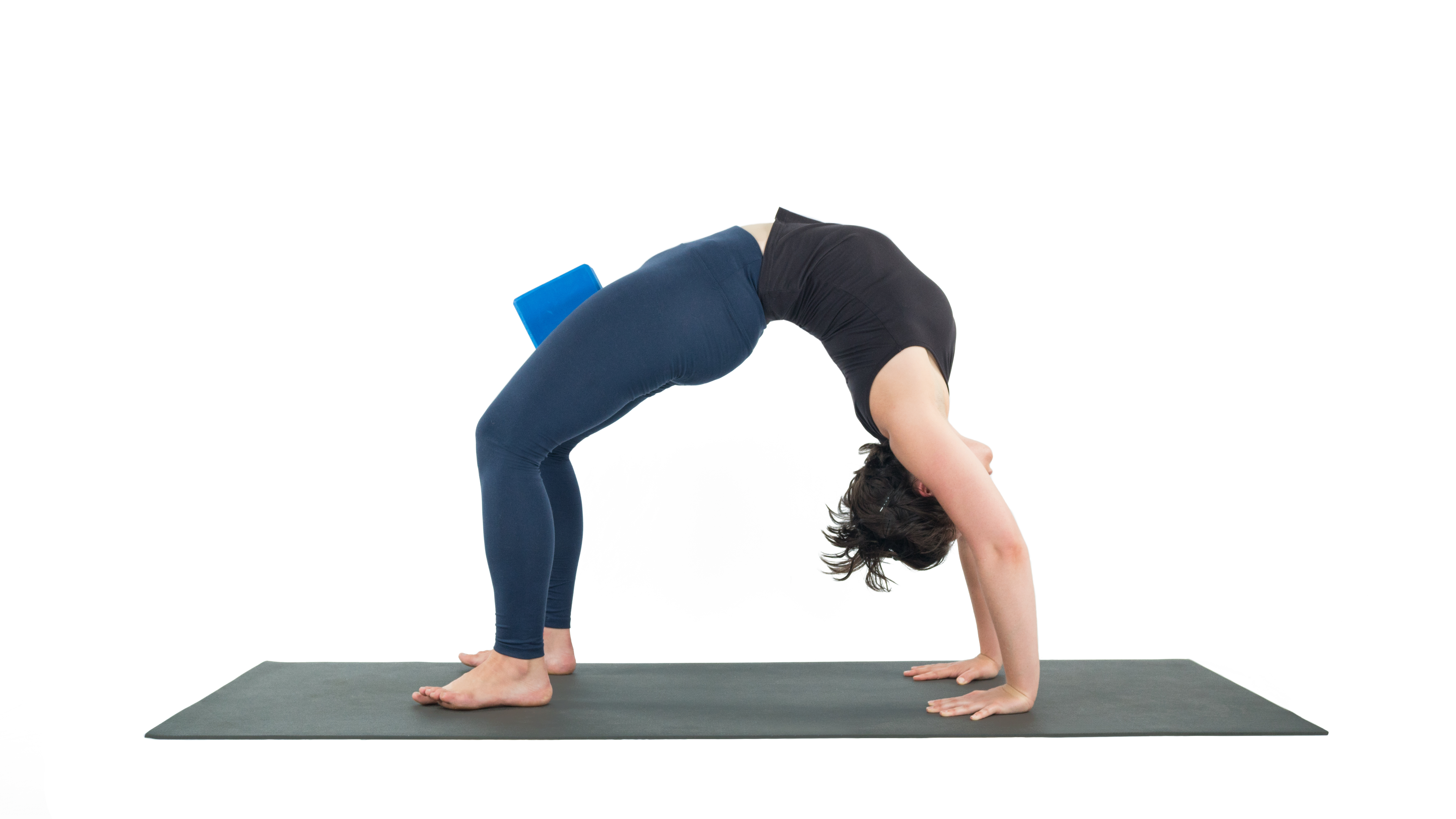
-
Lie on your back on a nonskid yoga mat with your knees bent and the soles of your feet on the floor.
-
Take a few breaths to settle your body into the floor.
-
Bend your elbows and place your hands on either side of your head with your forearms basically vertical and your fingers pointing slightly outward.
-
Press your hands into the floor and push your whole body toward your feet.
-
As your weight shifts a bit more from your shoulders to your legs, push with the hands and feet up into Upward Bow, arms bent or straight. (shown right with a block between the thighs)
-
Bend the knees and elbows to gently lower the body back to the floor.
-
Relax for a few breaths and tune into the sensations you feel in your body.
-
When you’re ready, repeat the process. I like to do at least two rounds, usually three, because your first Urdhva Dhanurasana is likely to feel pretty stiff. After a few rounds, your body warms up to it.
This way of moving into the pose deviates from what I was taught for years. The usual way is to lift the hips, press the shoulder blades into your back and lift up using your arms. Because the legs are much stronger than the arms, I now push my weight into my legs, as above. It’s much easier. In fact, it’s the way I moved into the pose as a child when my sisters and I would do it in the yard for fun. This easier, more graceful way of moving into it was taught out of me in yoga classes. I’m grateful to Judith Hanson Lasater for reminding me of my original, intuitive way of moving into it.
After Urdhva Dhanurasana
Urdhva Dhanurasana is very heating and stimulating. For this reason, I usually don’t teach it in my classes that end later in the evening. Years ago, one student told me she was up vacuuming at 1:30 am after practicing Urdhva Dhanurasana in an evening class! 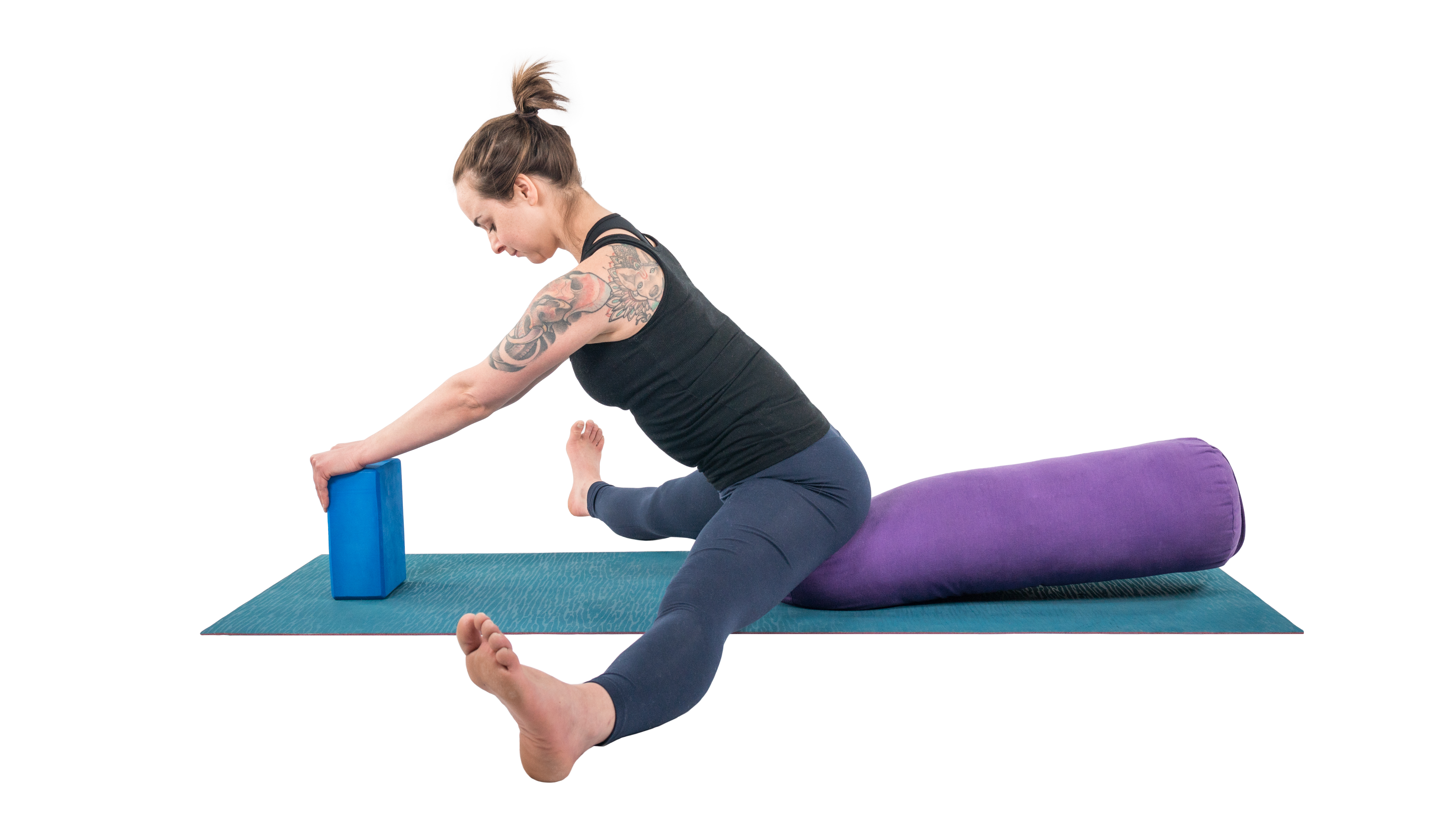
You can dampen some of the possible over-stimulation by practicing cooling poses after practicing Upward Bow. Here’s a short sequence:
-
Jathara Parivartanasana (Revolved Belly Pose)
-
Janu Sirsasana (Head-of-the-Knee Pose)
-
Upavista Konasana (Seated Angle Pose) (shown right with bolster, block)
-
Paschimottanasana (Seated Forward Bend)
-
Savasana (at least 10 minutes, but 15-20 would be better) (shown below with bolster for knee support)
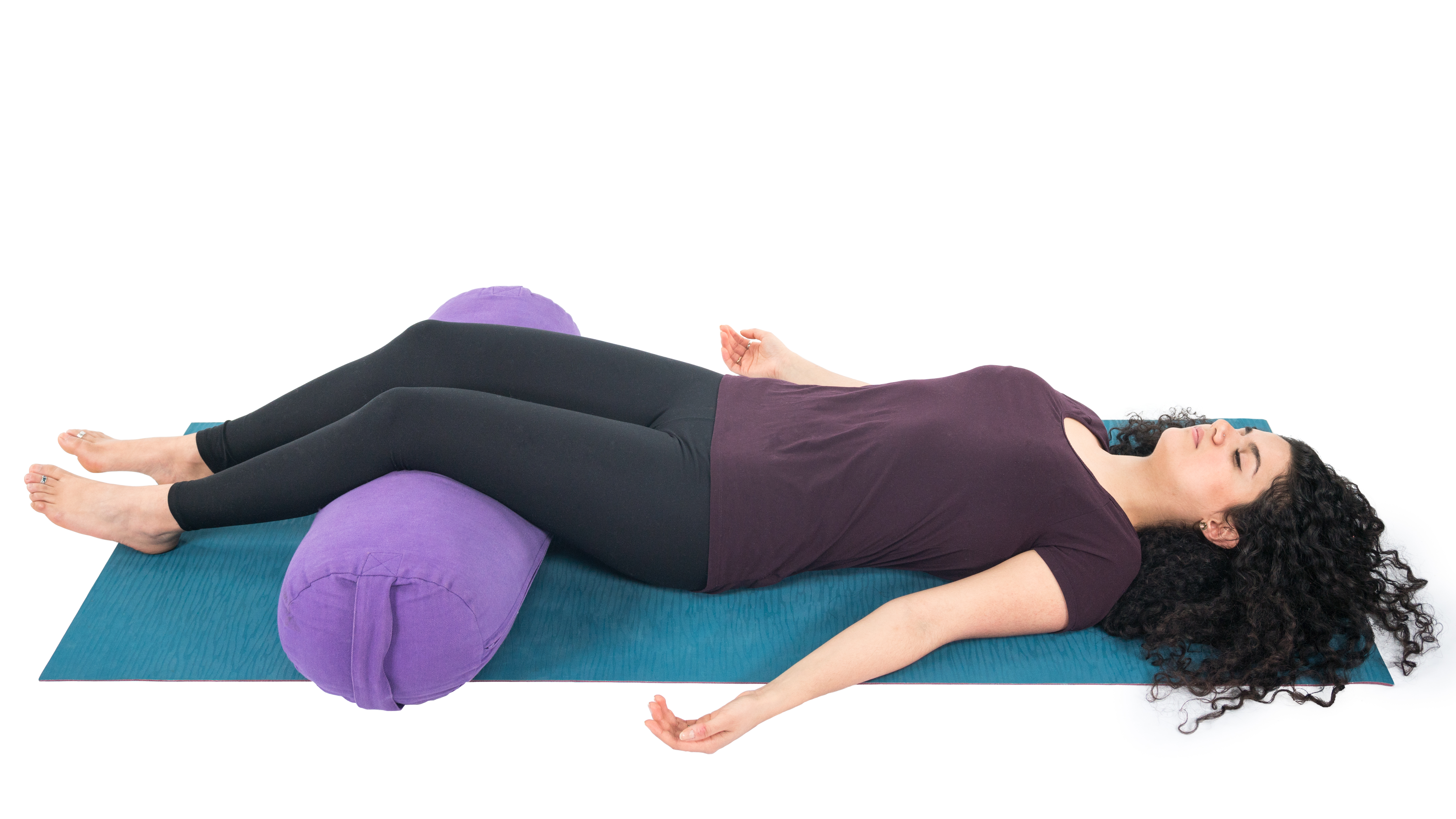
Remember that if your body never forms Urdhva Dhanurasana, your practice will not be incomplete. Asana practice has never been about what your body can or can’t do. It’s about your intention and the quality of attention you bring to whatever pose you’re practicing, no matter what it looks like. Whether you practice Cobra Pose or Upward Bow, relax, breathe, and enjoy the benefits of backbending.
Another article from Charlotte Bell - How to Fall in Love with Your Yoga Practice.
Yoga for Chronic Pain: Yogic Keys for Relieving, Managing, and Eliminating Persistent Pain Issues. 
Reprinted with permission from Hugger Mugger Yoga Products' blog.
 Charlotte Bell began practicing yoga in 1982 and began teaching in 1986. She was certified by B.K.S. Iyengar in 1989 following a trip to Pune. In 1986, she began practicing Insight Meditation with her mentors Pujari and Abhilasha Keays. Her asana classes blend mindfulness with physical movement. Charlotte writes a column for Catalyst Magazine and serves as editor for Yoga U Online. She is the author of two books: Mindful Yoga, Mindful Life and Yoga for Meditators, both published by Rodmell Press. She also edits Hugger Mugger Yoga Products¹ blog and is a founding board member for GreenTREE Yoga, a non-profit that brings yoga to underserved populations. A lifelong musician, she plays oboe and English horn in the Salt Lake Symphony and the folk sextet Red Rock Rondo whose 2010 PBS music special won two Emmys.
Charlotte Bell began practicing yoga in 1982 and began teaching in 1986. She was certified by B.K.S. Iyengar in 1989 following a trip to Pune. In 1986, she began practicing Insight Meditation with her mentors Pujari and Abhilasha Keays. Her asana classes blend mindfulness with physical movement. Charlotte writes a column for Catalyst Magazine and serves as editor for Yoga U Online. She is the author of two books: Mindful Yoga, Mindful Life and Yoga for Meditators, both published by Rodmell Press. She also edits Hugger Mugger Yoga Products¹ blog and is a founding board member for GreenTREE Yoga, a non-profit that brings yoga to underserved populations. A lifelong musician, she plays oboe and English horn in the Salt Lake Symphony and the folk sextet Red Rock Rondo whose 2010 PBS music special won two Emmys.
Featured Courses








